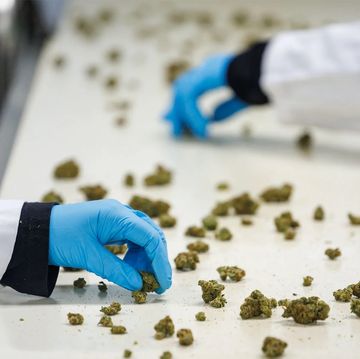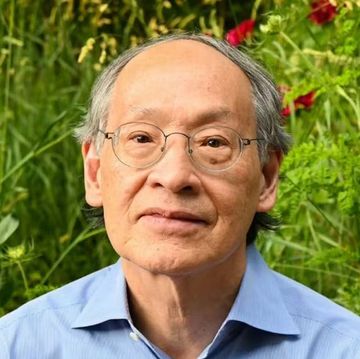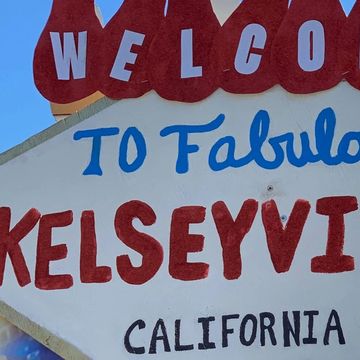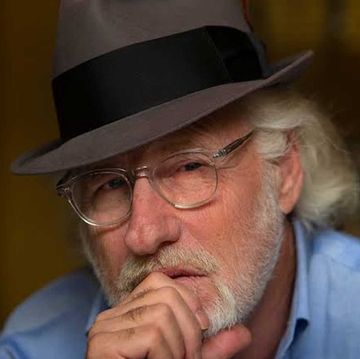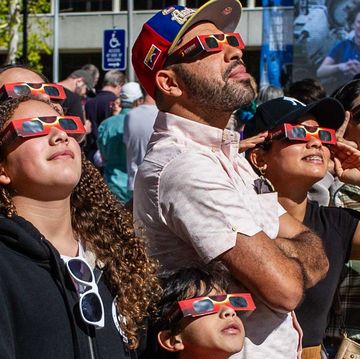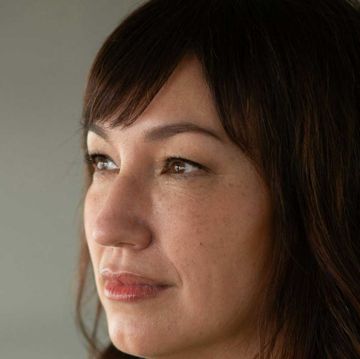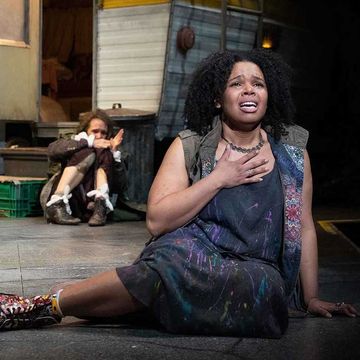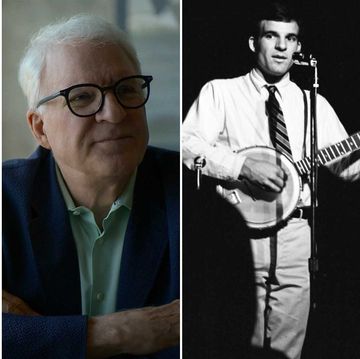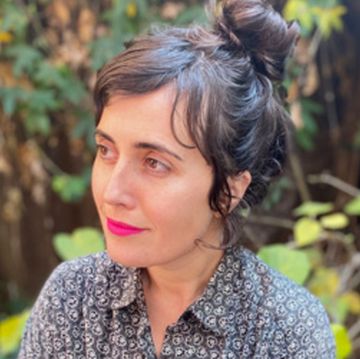In September 2019, about a dozen people gathered in a pizza parlor in La Pine, a tiny city in central Oregon, to talk about splitting the state in half. Under the gaze of deer heads mounted on the walls, ranchers and writers and retirees discussed how the big liberal cities in western Oregon—Portland, Eugene, the capital city of Salem—dominated the state’s politics, with little or no thought for the more rural, conservative counties east of the Cascade Range. Whether it was taxes, drug policy, gun control, or abortion, it felt as though the voices of eastern Oregonians were being drowned out by the majority or simply ignored.
“It was kind of jumbled,” says Mike McCarter, a 76-year-old retired nursery manager and veteran. “People were having a hard time explaining where they wanted to go.” Democracies are all about the numbers, in theory at least, and as in many other states, Oregon’s dense urban areas tilt the voter rolls blue. More than twice as many people live in Multnomah County, which includes Portland, as in the eastern two-thirds of the state.
But what if there was a way to give these disenfranchised voters a chance to realize policies in line with their values? That informal meeting turned out to be a launchpad for what has become known as the Greater Idaho movement, which is pushing to divide Oregon along the Cascades and add the eastern portion to equally red Idaho. Not just a divorce, but an instant remarriage to the next-door neighbor.
It’s a radical idea, one that detractors say would only make the problem proponents claim to solve—the growing schism between red and blue America—infinitely worse. Yet as improbable as it may look on paper, the Greater Idaho movement has gained a momentum that seems to have surprised both sides. As of press time, 12 counties in eastern Oregon had voted in favor of at least officially discussing the idea.
“They set Oregon’s borders 164 years ago,” says McCarter, president of what has become the Greater Idaho movement. “Maybe it’s time to reconsider.”
On almost any road that runs east over the Cascades, there comes a point where the landscape suddenly transforms. In less time than it takes for a radio commercial to play, the steep, damp pine forests give way to high desert dotted by sagebrush and scattered junipers. The skies open wide, and the horizon flattens in the distance.
It’s this boundary that should be the state border, not the one 250 miles east, says Matt McCaw, spokesperson for the Greater Idaho movement. From his back porch in Powell Butte, an hour north of La Pine, the view west takes in half a dozen jagged Cascade volcanoes—or it would if it weren’t for the haze of wildfire smoke that blurs the vista during a visit this past September.
McCaw, a small business owner, grew up in central Oregon and spent two decades in the Portland metro area. He has watched the two regions of the state steadily grow further apart. “They’re completely different,” he says, “different geographies, different cultures, different economies.”
Eastern Oregon encompasses roughly 60,000 square miles of farms and pastures, rolling hills, and scattered mountain ranges. It’s strongly Republican and sparsely settled, with only 13 percent of the state’s 4.25 million residents. Harney County, which is roughly the size of Massachusetts, has only 7,500 residents—and 100,000 cows. Many county populations in eastern Oregon are low, stagnating, or falling, and local economies are struggling, in part owing to the decline of the timber industry.
The cultural chasm has only gotten worse in recent years, McCaw says. The state’s fast and firm response to the COVID-19 pandemic seemed to push things to a new level. “What happened during COVID just made it crystal clear: the government has the power to shut down your business, shut down your church, take your kids out of school,” McCaw says. “Over here, people didn’t want any of that. It causes all this turmoil that doesn’t need to be there.”
Then there was the 2020 ballot measure that made Oregon the first state to decriminalize the personal possession of hard drugs, even though almost every county in eastern Oregon voted against it. Another recent law, which limits high-capacity gun magazines and requires permits to buy firearms, has been frozen by a Harney County judge pending a legal battle over its constitutionality.
In Idaho, by contrast, Republican voters outnumber Democrats by nearly 5 to 1. Boise, the largest city, is an island of blue in a sea of red. The Greater Idaho plan would allow residents of eastern Oregon to be represented by like-minded leaders, McCaw says. “People don’t like the partisan bickering. They want policy to make sense for their communities.”
“It’s like we don’t even exist in the eyes of the state government,” says Becky Wilson, a retired English teacher in La Grande, in Oregon’s far northeast corner. “Unless it’s for a local issue, it’s hardly even worth voting.” The feelings of marginalization include simple things like how statewide conferences always seem to be held in western Oregon, she says. “If you say, ‘Well, could we meet in Pendleton?’ ”—roughly in the middle of the state—“they say, ‘Oh, that’s too far for us to travel.’ Why is it you expect us to drive five hours to Salem for a meeting, but you don’t want to?”
This article appears in Issue 26 of Alta Journal.
SUBSCRIBE
Wilson says that Greater Idaho is a frequent topic of conversation among her friends and family, most of whom, as she did, voted yes on their county’s Greater Idaho ballot initiative in 2020. Even though she thinks the chances are low that the state border will ever change, that’s not really the point. “We want to send a message that we would like to be listened to,” she says. “We want them to know how strongly we feel.”
Arguing over state boundaries is a proud American tradition. In the country’s early years, new states were often formed by splitting existing ones: Maine was originally part of Massachusetts, Kentucky was part of Virginia, and Tennessee started as the western arm of North Carolina.
But even official proclamations didn’t stop citizens from trying to redraw some borders almost from the moment they were established. Several counties in northern Illinois that were originally part of Wisconsin attempted to rejoin the Badger State in the 1840s. The Civil War brought about the most famous case of state splitting, when West Virginia separated from Virginia in 1862 rather than join it in seceding from the Union. President Abraham Lincoln acknowledged the extremity of the measure even as he signed the paperwork, saying, “The division of a State is dreaded as a precedent.”
The Pacific Northwest has been especially fertile ground for attempts to redraw the map. Dating back to the 1860s, proposals for the Territory of Columbia and the State of Lincoln have included various parts of Washington, Idaho, Oregon, and Montana. The State of Jefferson, encompassing a southern section of Oregon and a northern section of California, issued a Proclamation of Independence in December 1941 and threatened to “secede every Thursday until further notice.” It even inaugurated a governor, but the attack on Pearl Harbor put the idea—at least temporarily—to rest.
Over the decades, political and cultural divisions have spurred calls for entities with names like South Florida, New Oklahoma, and the Second Vermont Republic. There have been more than 200 attempts to break up California since it became a state in 1850. Just last year, San Bernardino County voted to study the possibility of secession. And Texas hasn’t stopped threatening to leave the United States since it joined in 1845.
No matter how enthusiastic the effort, though, changing the border between Oregon and Idaho would require a two-thirds vote in both state governments, a voter referendum, and an act of Congress signed by the president. “The idea that this would happen is laughable,” Idaho state representative Ned Burns, a Democrat, said in an interview with Fox News. “The proposal to move state boundaries is virtually impossible to execute.”
The political impact of Greater Idaho on Oregon would likely be minimal, McCaw says, since the eastern region is so sparsely populated; only 3 of Oregon’s 30 state senators represent the area. The potential economic impact is much less clear. A report by the Claremont Institute, a conservative think tank, looked at what would happen if 19 counties and parts of 3 others in Oregon were to join the neighboring state. It found that Idaho’s lower taxes and looser business regulations could add 10,000 to 12,000 jobs and $1.8 billion to $2.2 billion to the economy of what is now southern and eastern Oregon.
But newly minted Greater Idahoans would have to pay sales tax and learn to live without Oregon’s abortion protections, paid family leave, mail-in voting, and health insurance program for low-income residents. Idaho’s minimum wage is just over half of Oregon’s, and legalized marijuana, which earns municipalities millions of dollars in taxes, would become a thing of the past, even for medical uses.
Then there’s the question of what Idaho would stand to gain besides, as the Greater Idaho website puts it, “the satisfaction of freeing more than 380,000 rural Oregonians from woke progressive blue-state law.” Idaho was the second-fastest-growing state in 2022, attracting new residents with its scenic landscapes, relatively affordable housing, and employment opportunities. That huge influx, on top of the effects of the pandemic, has already stretched the state’s economy to the breaking point.
A recent ProPublica article reported that Idaho had the worst-funded public schools in the U.S., and the state has been hemorrhaging maternal-healthcare providers since it passed some of the strictest antiabortion laws in the country. If Greater Idaho were realized, Idaho’s Medicaid enrollment would increase significantly, and the state would also have to shoulder the financial burden that western Oregonians now bear subsidizing their rural neighbors.
“We can barely pay the bills as it is,” says Idaho Senate minority leader Melissa Wintrow. “We’re in a healthcare crisis, just doing our best to keep our head above water, and now we’re going to add a whole other swath of land? They’re not looking at the bigger picture.”
In a state known for its natural beauty, the Grande Ronde Valley in Oregon’s northeast corner still stands out. Encircled by the Blue Mountains, it’s 500 square miles of golden grasslands and small agricultural communities. On the road to La Grande, in the middle of the valley, yard signs appear supporting Greater Idaho and opposing Oregon’s gun control ballot measure. With 13,000 residents, La Grande is both the largest city and the seat of Union County, one of the 12 counties that voted yes on Greater Idaho.
It’s here, in September, that eight members of the Union County Progressives meet in the living room of Maxine Hines, a retired probation counselor and general contractor. Most are also members of Oregon Together, a loose network of locals from various counties who are opposed to the Greater Idaho movement. Hines’s dog, Abby, a Boston terrier mix, makes the rounds for pats as people catch one another up on local news and the current status of the border dispute.
Topics range from what could be lost if the border moved—abortion rights and Oregon’s strong environmental protection laws—to empathy for what it feels like to be surrounded by people with different values. “We liberals are definitely in the minority here in Union County,” Hines says. The group has only started meeting in earnest in the past six months, she adds. “The apathy is changing—these guys are vocal and organized, and we’ve realized they’re really serious.”
The mood in the room is mostly exasperation, with flashes of puzzlement and guarded optimism. Some wonder how much the border issue is even worth discussing, given the low odds of proponents actually succeeding. “The question is, why waste time on this?” says educator Max Koltuv. “Nothing about this Greater Idaho thing is going to have any impact on any legislation any of us live under.”
Kathy, a retired healthcare professional who doesn’t want her last name used, couldn’t disagree more: “The impossible can happen. We’ve seen that. I mean, Trump was elected.”
“They’re trying to get people riled up and against each other, and that’s wrong,” Hines says. “They’re not telling the truth, and they keep saying that we want to be part of Idaho. And I think we need to dispute that.”
A 2021 poll conducted by the nonpartisan Oregon Values and Beliefs Center found that 42 percent of Oregonians were opposed to Greater Idaho, 38 percent were in favor, and 20 percent were undecided.
Accusations of dishonesty and bad faith have flown both ways, especially in May, when neighboring Wallowa County became the 12th county to pass a ballot measure supporting Greater Idaho—by seven votes. During the campaign, Western States Strategies, a Portland-based nonprofit that focuses on strengthening inclusive democracy through nonpartisan education and advocacy, sent out mailers and ran online ads opposing Greater Idaho, primarily because of where support was coming from. A number of far-right leaders have endorsed the Greater Idaho movement, including Ammon Bundy, who led the 2016 occupation of the Malheur National Wildlife Refuge, in Harney County.
“It’s clearly a secessionist movement, and given the region’s history, that is concerning,” says Stephen Piggott, program director for the Western States Center, a nonprofit that advocates for marginalized communities. Oregon was the only state to enter the Union with a Black exclusion law and was known for a strong KKK presence during the 20th century. Northern Idaho has been a magnet for well-known white nationalist figures for decades.
“We’re certainly not saying it’s a white nationalist group,” Piggott adds. “But I think they see Greater Idaho as seeding the soil for the type of movements they want to enact.” He points out that the group’s original Facebook page was reportedly shut down after posts containing election conspiracies and anti-LGBTQ rhetoric appeared.
McCaw says that happened before he joined Greater Idaho. “That was an era of pretty heavy censorship and heavy-handedness from big tech companies,” he adds. “When government takes on these extra-massive powers, you got to make sure that they align with your value system. Otherwise, they have the power to affect your life pretty dramatically.”
Any claims of connections to white nationalist figures or organizations are baseless smears, he says. “We are a single-issue organization.”
Controversy aside, McCaw is happily surprised by how far the idea has come in only four years. “People are starting to look at us as a valid movement,” he says, and not just in the United States. Three-quarters of the donations Greater Idaho has received are from outside the two states, he says, including some from as far away as Mexico and Australia. County votes have drawn high turnouts and averaged more than 60 percent in favor of joining Idaho. But the fact that the Wallowa ballot measure was so close may show that in some counties, Greater Idaho has less support than expected.
Meanwhile, across the border in Idaho, a 2021 poll found 51 percent in favor of uniting with eastern Oregon, 35 percent opposed, and 14 percent undecided. (The Trafalgar Group, which conducted the survey, has been suspected of having a conservative bias.) The four Indigenous groups whose lands fall within the breakaway region of Oregon have not been polled.
It can be easy to make fun of Greater Idaho, as The Daily Show did during a segment last year. (Sample question: “Why can’t we all just declare which state we want to be a part of regardless of which state we actually live in?”) But at times, the movement seems to encapsulate almost too perfectly the growing rift in American society—and the feeling that our political system has stopped working in some fundamental way.
“Any time people feel that the best answer is to move to another state, that’s reflective of a mass breakdown in the foundations of our democratic union, and that’s something we all need to be concerned about,” says Elise Keith, Oregon coordinator for Braver Angels. The national nonprofit was founded in 2016 to facilitate productive discussions about polarizing issues like reparations, mask mandates in schools, and abortion.
Idaho state representative Barbara Ehardt puts it more bluntly. “Oregon is a great example of how democracy fails,” she says. “The minority is never taken care of, and the majority of the loudest voices win. And that’s why eastern Oregon wants out.”
Fracture lines have worked their way into the statehouses on both sides of the border. Last February, Idaho’s House of Representatives voted in favor of legislation to present an official proposal to Oregon about shifting the boundary west. Though the bill has stalled in the state senate, Greater Idaho claimed it as a victory.
In May, several state senators who represent eastern Oregon took part in a walkout ostensibly to protest proposed bills on abortion access, gun control, and gender-affirming care. The six-week boycott was the longest in Oregon history, and the action may prohibit the senators from running for reelection.
Even if redrawing the border would be the political equivalent of a hole in one during a hurricane, it’s hard to find anyone who thinks the frustrations behind Greater Idaho aren’t genuine. And if these local concerns are enough to raise the possibility of splitting a state in half, what does that say about our ability as a country to wrestle with issues that extend far beyond state borders, like water rights or climate change?
Seen in its best light, Greater Idaho can be viewed as an attempt to find a solution rather than stick with the status quo or give up. It may even spur change and dialogue between the two camps, among those interested in keeping the peace. This is already happening, albeit in small steps: the state’s marijuana-legalization law lets individual counties and cities permit or prohibit dispensaries as they see fit, and the latest minimum wage increase sets different rates for the Portland metro area and “nonurban counties.” There’s also the High Desert Partnership, a nonprofit started by a rancher in Malheur County and a local wildlife refuge manager, which has found success setting up collaborative projects to address contentious local issues—wildfire prevention and invasive species management, for instance—that usually spark hostility and lawsuits among conservationists, government agencies, tribal members, farmers, and ranchers.
Greater Idaho has reached out to Braver Angels, although no meetings have happened yet. And amid all the frustrations that filled the Union County Progressives meeting, people could still give examples of how the two sides of the political spectrum have been able to come together—to operate the local homeless shelter, for example, and to coordinate search and rescue teams. Republicans and Democrats even joined forces in a recent battle to stop a 300-mile power line being built across five Oregon counties. They were unsuccessful, but the effort was bipartisan.
The next Greater Idaho vote is scheduled for May 2024 in Crook County, where McCaw lives. In the meantime, both sides will have to weigh pushing for what they think is right against trying to find some kind of common ground.
To some Oregonians, the argument runs much deeper than the current cultural flash points that color the discussion. Dorene Stevens lives in an 1880s homestead on a small farm and ranch outside La Grande. In 1852, her great-grandfather walked the Oregon Trail from Iowa at the age of 11. His descendants still hold the longest-running formal family reunion in the state; this year was number 135.
“There was and still is a lot of pride and gratitude for the sacrifices our ancestors made for future generations,” she says. It’s those roots that put her on the side of staying over going. “First and foremost, I am an Oregonian through and through.”•

Julian Smith is an award-winning nonfiction journalist specializing in history, science, and travel. His work appears in Smithsonian, Wired, Outside, National Geographic Traveler, and the Washington Post. His most recent book, Aloha Rodeo: Three Hawaiian Cowboys, the World’s Greatest Rodeo, and a Hidden History of the American West, won the 2020 Oregon Book Award. He lives in Portland, Oregon, with his family.








